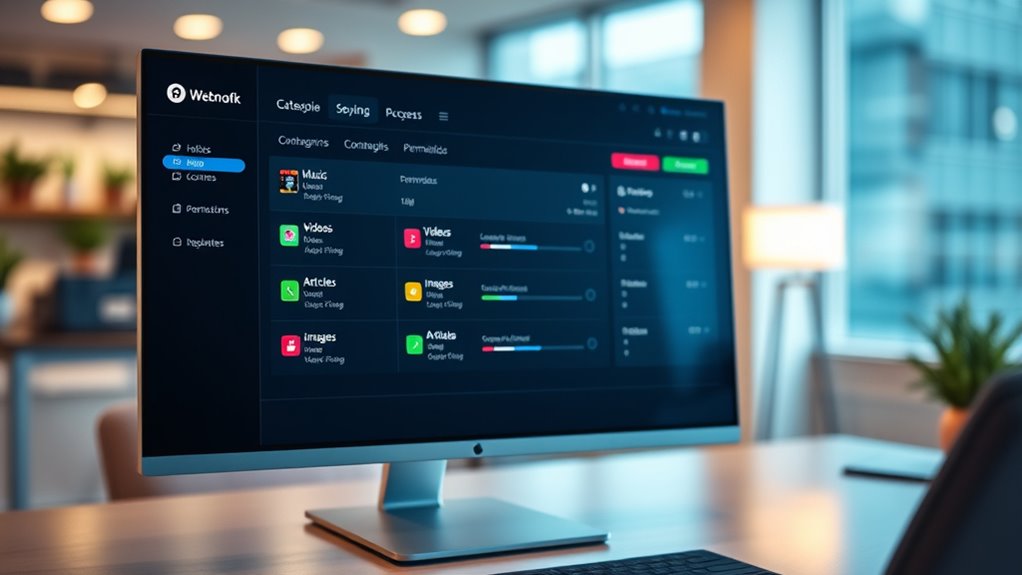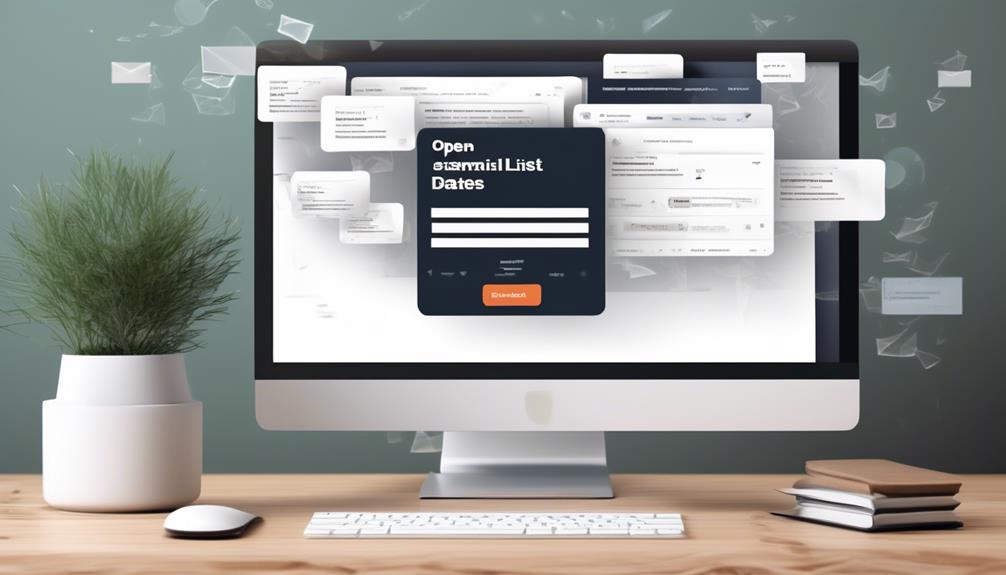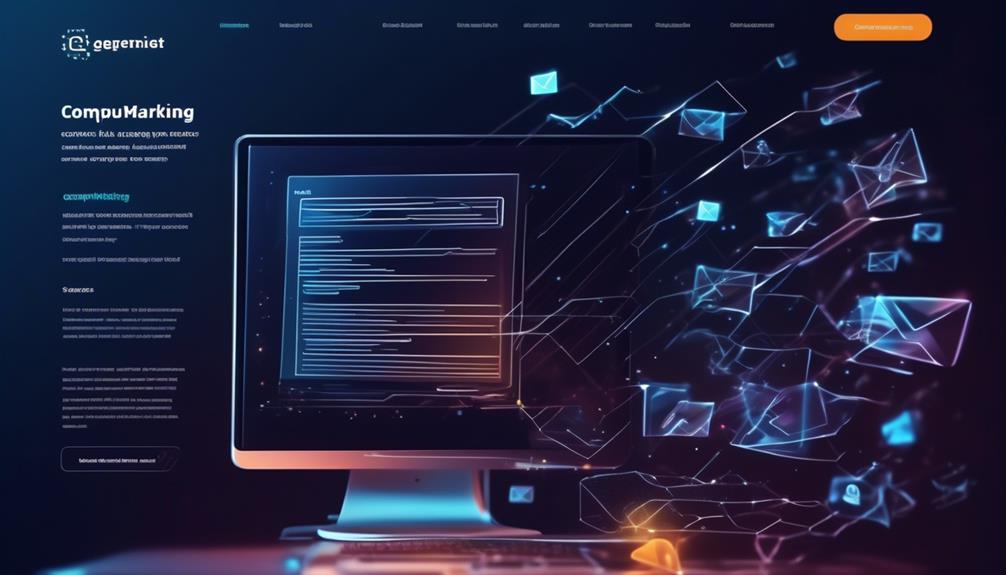Granular permissions let you customize what content each subscriber can access and choose the types they prefer. By setting specific access levels based on roles, you ensure users see only the information they need, reducing risks and boosting engagement. You can enable filters for categories, formats, or topics, giving your subscribers control over their experience. If you want to discover how combining these options enhances security and personalization, keep exploring the details.
Key Takeaways
- Granular permissions enable subscribers to select specific content types aligned with their interests and roles.
- Content filtering options improve user experience by displaying only relevant content categories.
- Layered access controls restrict content visibility based on subscriber permissions and preferences.
- Combining permissions and filtering ensures personalized, secure content delivery tailored to each user.
- Fine-tuned content choices enhance engagement, satisfaction, and retention through customization.

Have you ever wondered how organizations guarantee that only the right people access specific data or features? It all comes down to the power of granular permissions. This approach enables you to fine-tune access controls, giving users specific rights based on their roles or preferences. By implementing custom role management, you can assign tailored permissions that precisely match each user’s responsibilities. Instead of granting blanket access, you create a system where users see only what they need, reducing the risk of data leaks and unauthorized actions. Custom role management becomes an essential tool for managing complex access levels, especially in large organizations or platforms with diverse user bases.
Granular permissions and custom roles ensure secure, tailored access for diverse user needs.
Granular permissions also empower you to offer content filtering options that allow subscribers to choose the types of content they want to see. This flexibility enhances user experience because individuals no longer have to sift through irrelevant information. Instead, they can customize their content feeds, selecting categories, formats, or topics that matter most to them. With detailed control over what content is accessible or visible, you improve engagement and satisfaction. For example, a news platform could let users filter out certain topics or sources, ensuring they only receive updates aligned with their interests. This level of customization keeps users engaged longer and fosters loyalty.
Implementing granular permissions with custom role management means you can set specific rules for content access. For instance, you might assign some users to see exclusive content while restricting others to general material. Content filtering options can be layered on top of these permissions, giving subscribers the ability to further refine what they see within their allowed access. This layered approach ensures that permissions are both flexible and precise, accommodating various user needs and organizational policies. It also makes it easier to manage large-scale permissions without overwhelming your administrative processes.
Ultimately, this combination of custom role management and content filtering options creates a more personalized and secure environment. You can confidently control who accesses what and how they interact with your content. Subscribers appreciate the ability to tailor their experience, leading to higher satisfaction and retention. Meanwhile, you maintain tighter security by limiting access to sensitive data or features based on clearly defined roles. This targeted approach to permissions isn’t just about security; it’s about delivering a user-centric experience that respects individual preferences while safeguarding your organization’s assets. When you leverage these powerful tools effectively, you create a seamless, secure, and personalized environment that benefits everyone involved. Effective access control ensures that sensitive information remains protected while providing a tailored experience for users.
Frequently Asked Questions
Can Granular Permissions Be Customized for Individual Users?
Yes, you can customize granular permissions for individual users. This user-specific permission customization lets you tailor access levels based on each subscriber’s needs. You have control over who can view, edit, or manage specific content types, ensuring a more secure and personalized experience. By setting these detailed permissions, you make sure each user only accesses the content they’re authorized for, enhancing overall system security and user satisfaction.
How Do Granular Permissions Impact Content Discoverability?
Granular permissions improve content discoverability by refining user access control based on content categorization. When you set specific permissions, users can easily find relevant content without sifting through unrelated material. This targeted approach streamlines navigation, guarantees users see only what they’re authorized to access, and enhances engagement. By customizing permissions, you create a more personalized and efficient content discovery experience that aligns with each user’s needs and access rights.
Are There Any Security Risks With Detailed Permissions?
Yes, there are security risks with detailed permissions. You might encounter security vulnerabilities if permissions are misconfigured, potentially giving subscribers access to sensitive content unintentionally. Always double-check your permission settings to prevent permission misconfigurations. Regularly auditing your permission setup helps you identify and fix vulnerabilities, ensuring that only authorized users access specific content types. Proper management minimizes risks and keeps your system secure.
How Do Permissions Settings Integrate With Existing User Roles?
Think of permissions settings as a dance that flows smoothly with your existing role hierarchy. You’ll find that they integrate seamlessly, respecting permission inheritance rules to guarantee consistency. As you assign roles, permissions cascade naturally, allowing subscribers to access only what’s intended. This harmony keeps your system organized, giving you control without chaos. By aligning permissions with roles, you create a secure, flexible environment that adapts effortlessly as your needs evolve.
Can Permissions Be Temporarily Modified for Special Events?
Yes, you can temporarily modify permissions for special events using permission overrides. This grants your subscribers temporary access to specific content types, making it easy to manage during events. You simply implement permission overrides, which temporarily adjust their access rights. Once the event ends, you revert these settings to normal, ensuring secure and flexible control over content access without permanently altering existing permissions.
Conclusion
By enabling granular permissions, you put control firmly in your subscribers’ hands, letting them choose exactly what content they want to see. This not only boosts engagement but also builds trust, showing you’re attentive to their preferences. Remember, giving them the power to customize their experience is often the key to keeping them happy and loyal. After all, it’s better to have a few tailored options than a one-size-fits-all approach that misses the mark.









